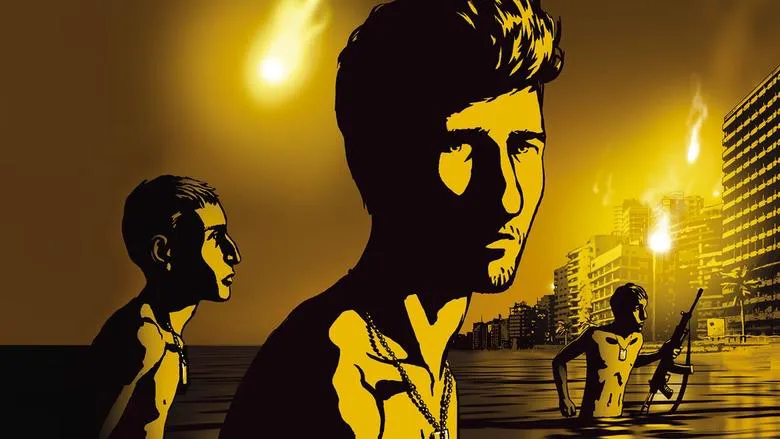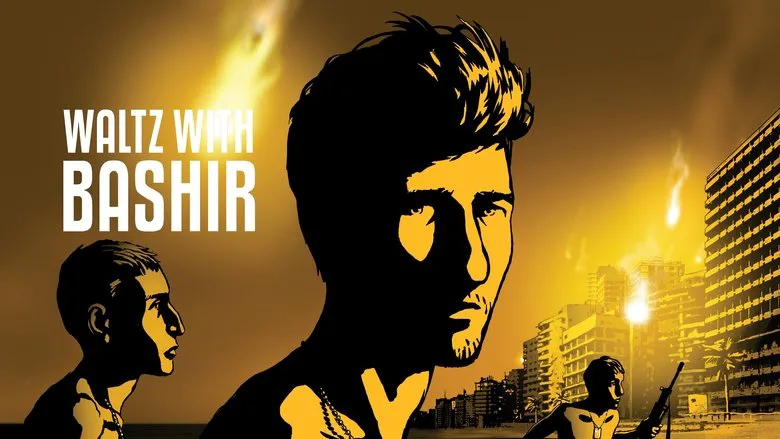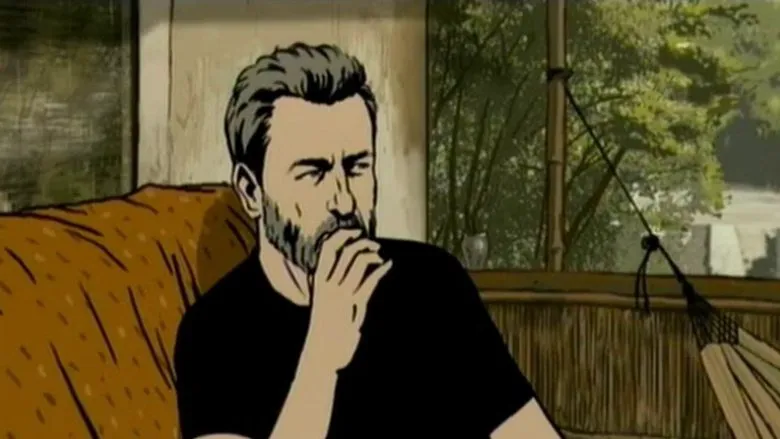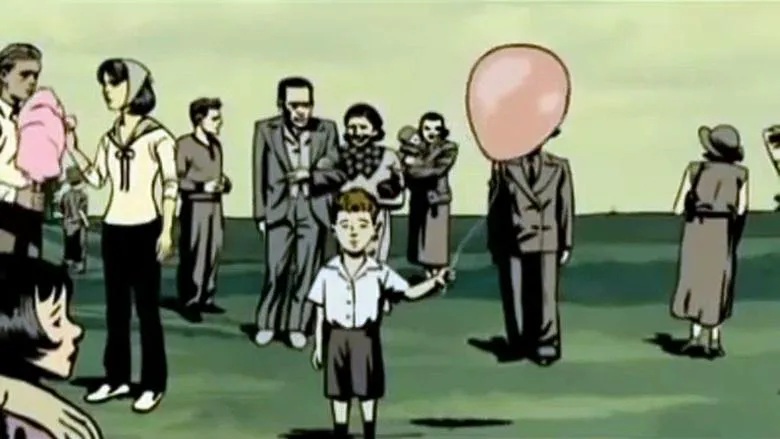Waltz with Bashir: An Animated Canvas of Trauma and Remembrance
Deep within the recesses of his mind, Ari Folman, the film’s protagonist and director, grapples with a disquieting void. Plagued by recurring nightmares of snarling dogs, he slowly becomes aware of significant memory gaps from his time serving in the military. This unsettling amnesia propels Ari on a deeply personal pilgrimage, leading him to reconnect with old comrades and seek therapeutic guidance in an earnest attempt to unearth the buried past. What he slowly, painstakingly reconstructs is the harrowing reality of the Sabra and Shatila massacre of 1982 – a horrific chapter where Lebanese Christian Phalangists perpetrated a brutal slaughter of Palestinian refugees in the Sabra and Shatila camps, an atrocity that unfolded while under the distant, yet undeniable, watch of Israeli forces, following the assassination of Lebanese President Bashir Gemayel.

More than just a unique war film, “Waltz with Bashir” masterfully intertwines elements of a documentary and an autobiography, astonishingly rendered through the medium of animation. Ari Folman, already an accomplished documentary filmmaker and a direct veteran of the 1982 Lebanon War, embarks on this narrative quest by reuniting with former military compatriots. These are men who have, over the decades, transitioned into seemingly tranquil, even bourgeois, civilian lives, now confronting the specters of a shared past. Initially, Folman’s methodology involved reconnecting with these veterans and even filming his own therapy sessions. This raw footage served as the foundation for what could have been a conventional full-length documentary. However, Folman and his visionary team chose a path less traveled. Rather than releasing it as standard television content, they meticulously transformed the entire documentary into an animated storyboard, breathing new life into the recounted memories. Despite possessing no drawing skills himself, Folman spearheaded this ambitious project, marshalling a talented team to employ a sophisticated mixed animation technique, predominantly utilizing Flash alongside various other innovative methods. This approach allowed for a dreamlike quality that perfectly complements the film’s exploration of memory and the subconscious.

A Meditative Dive into War and the Labyrinth of Memory
The cinematic achievement is a profoundly compelling and often meditative film that paradoxically intersperses moments of intense, almost visceral action. These sequences, expertly crafted, bear stylistic hallmarks reminiscent of visionary directors like John Woo and Ridley Scott, infusing the animated narrative with a kinetic energy. Complementing these bursts of dynamism, the protagonist’s deeply personal hallucinations and fragmented memories evoke the raw psychological intensity found in the works of Oliver Stone. The film is rich with striking and often surreal imagery, from the haunting vision of a massive naked woman swimming effortlessly across the sea to rescue a Jewish soldier, to more subtle, yet equally potent, visual motifs. The narrative expertly weaves in poignant references to the Holocaust, adding a layer of historical weight and existential reflection. The film builds to an undeniably powerful and deeply disturbing climax: a sudden, jarring shift from animation to raw, unadulterated archival photographs, depicting the grim reality of the dead Palestinians at Sabra and Shatila – a visceral punch that shatters the animated aesthetic and grounds the viewer in the brutal truth of the events.

An Artistic Triumph Amidst Political Storms
The immediate question swirling around “Waltz with Bashir” — whether it’s primarily a work of art or a political declaration — finds a resounding, unequivocal answer: it is unequivocally art. Its meticulously crafted dramatic arc, coupled with an unflinchingly honest and raw script, sets a standard. The film’s pervasive somber color palette, which imbues every frame with a sense of melancholic realism, and recurring images like abandoned dogs sprinting through a desolate, ruined city under the cloak of night, all contribute to a profound aesthetic experience. Taken together, these elements imbue “Waltz with Bashir” with a depth and artistic integrity that arguably surpasses the collective merit of numerous films vying for major accolades.

Yet, in an increasingly polarized global climate where even the casual mention of specific identities can ignite fierce political discourse, Folman found himself thrust into the crosshairs of intense criticism. From the right wing, he was denounced as a defeatist, a “Euro-liberal” seen as betraying nationalistic fervor. Conversely, from the left, accusations flew that he was merely a propagandist for the Israeli military establishment, purportedly unwilling to demand concrete justice for alleged war criminals. Critics on this side claimed the film embodied a “weep and shoot” mentality – a peculiar and unsettling concept that leaves one to ponder if such a paradoxical policy genuinely permeates official military doctrine – and that Folman exhibited insufficient remorse for his personal involvement and the bloodshed in Lebanon. Further complicating these critiques, the film’s international acclaim and awards coincided eerily with Israel’s deeply contentious invasion of Gaza, inadvertently shrouding “Waltz with Bashir” in an additional layer of ambiguous political interpretation.

Echoes of a Lost Generation
In a region where significant conflicts recur with unsettling regularity – indeed, it could be argued that Israel faces a major war approximately every decade – the sentiment attributed to early 20th-century history of “each generation being lost” resonates profoundly. Ari Folman’s deliberate choice to narrate his story through the distinctive lens of animation was a conscious decision, explicitly designed to prevent his deeply personal, quarter-century-long nightmare from devolving into yet another conventional war film. In this ambitious endeavor, he has unequivocally succeeded. “Waltz with Bashir” transcends traditional genre boundaries, offering not just a historical account, but a poignant, introspective journey into the fractured landscape of human memory and collective trauma. This is a cinematic experience that should not be missed.